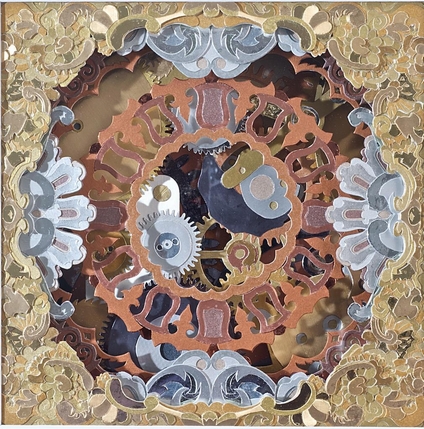
Passage
Curated by Simon Keenleyside
27october 2012 - 31 january 2013
At: BLINDARTE NAPOLI
ROSS CHISHOLM, SUSAN COLLIS , SIGRID HOLMWOOD, SIMON KEENLYSIDE, GREG ROOK, NOAH SHERWOOD, ALEXIS M. TEPLIN
Contemporary Blindarte is pleased to present Passage, an exhibition curated by Simon Keenleyside, bringing together eight artists living and working in and around London: Ross Chisholm, Susan Collis, Sigrid Holmwood, Simon Keenleyside, Greg Rook, Noah Sherwood, Alexis M Teplin and Will Turner. Brought together by artist Simon Keenleyside, the group of artists in Passage addresses the transitory nature of contemporary art practice, highlighting the experience of travel in time, space and media. In fact, this multidisciplinary exhibition presents the figure of the artist as a traveller whose passage through the times of culture suggests a series of possible alternatives to a single path. Through different formats of expression and communication, Passage seems to reflect a modern understanding of mobility.
Ross Chisholm's practice is characterised by an exploration of the language and temporality of painting, through a reconfiguration of the conventions associated with this medium, and the creation of composite worlds where time place and memory collapse. Using raw materials from different contexts over time, such as portraits from 18th century society, along with photographs and slides of familiar images, Chisholm's practice condenses stories and conventions. Forms of portraiture, photorealism and abstraction are studied to leave the works as objects with an inherent temporality, around which the textures of meaning and context are constantly changing.
Susan Collis' work combines a process of drawing with installation and sculpture, often creating environments that at first glance confuse, but later delight the viewer. Her practice combines extremes: cheap disposable materials with highly prized ones, the random and the instantaneous with the meticulously crafted. His installations might at first glance appear half-finished or nothing more than the neglected aftermath of a previous exhibition. Only a closer examination can reveal that, for example, the screws left in the walls are made of solid gold, their dowels of precious turquoise, or that the white paint poured on them is an inlay of mother-of-pearl. the precious materials she uses have no symbolic value, but elevate the status of everyday objects, reproducing the ancient trick of trompe l'oeil that has never been used for such humble things.
Sigrid Holmwood's paintings depicting rural scenes originate from her interest in and participation in historical re-enactment groups and are made using original techniques from the early modern period. Her work often involves carpet research in ancient archives and consultation with biologists, chemists and historians. The peasants, the main subject of his works, are for Holmwood historical 're-enactors' with whom he identifies: like them, the artist seeks as much authenticity as possible. The identification with and re-enactment of the peasants are an integral part of the design of each painting.
Simon Keenleyside works within the tradition of British landscape painting, he explores the familiar surroundings of Essex, where he grew up and where he continues to live. Recently the artist has only returned to two specific locations, the lagoons and tributaries of the Thames. having made numerous trips to just two sites the artist has questioned the ontological understanding of place and although references to landscapes remain prevalent in the artists work, in the last year Keenleyside has investigated the possibilities of painting in even greater detail, it is as if, as the artist pushes each painting towards abstraction, he is wondering what is yet to be discovered.
Greg Rook looks at the "survivalist" movement in its modern context, namely families choosing to disengage and act "as if..." By means of culture-crafting (building an alternative culture) and storytelling they are anticipating the collapse of society and building lifestyles 'outside the box'. There is a link between this culture-crafting of survival and Levi Strauss' idea of bricolage, and a parallel with the position of the contemporary artist working within our expressive pluralism.
Sculptor Noah Sherwood chooses potentially inert materials to make his works: from studio fragments to found objects to industrial prefabs. His manipulation techniques involve an intense process of transformation that develops complex self-supporting sculptural and architectural forms. Sherwood's forms are not fixed: they hint at a keen interest in collage and assemblage and broader perceptual and phenomenological interests in the nature of space and objects.
Alex M Teplin's artistic practice focuses on exploring the aesthetics and ethics of seduction through painting, sculpture and performance. Within his work, Teplin proposes abstraction as a central theme, drawing on the movements of history painting, the eroticism of the Rococo period, the Impressionists, early modernism and abstract expressionism. By adopting styles and subjects drawn from his historical references, through vigorous brushstrokes and vivid colours, he creates a cross-commission of historical applications and new representations, questioning the concept of the figure and the figurative.
Will Turner seeks to imbue the everyday with the magic and otherness of the most innocent times in our lives. These are simple consumer pleasures and themes of belonging, a sweet romantic nostalgia for childhood pastimes and hobbies. They are images that appeal to a specific audience, but also have universal validity. his images and drawings present a figurative mode of expression, with intense colours and a high level of detail.
